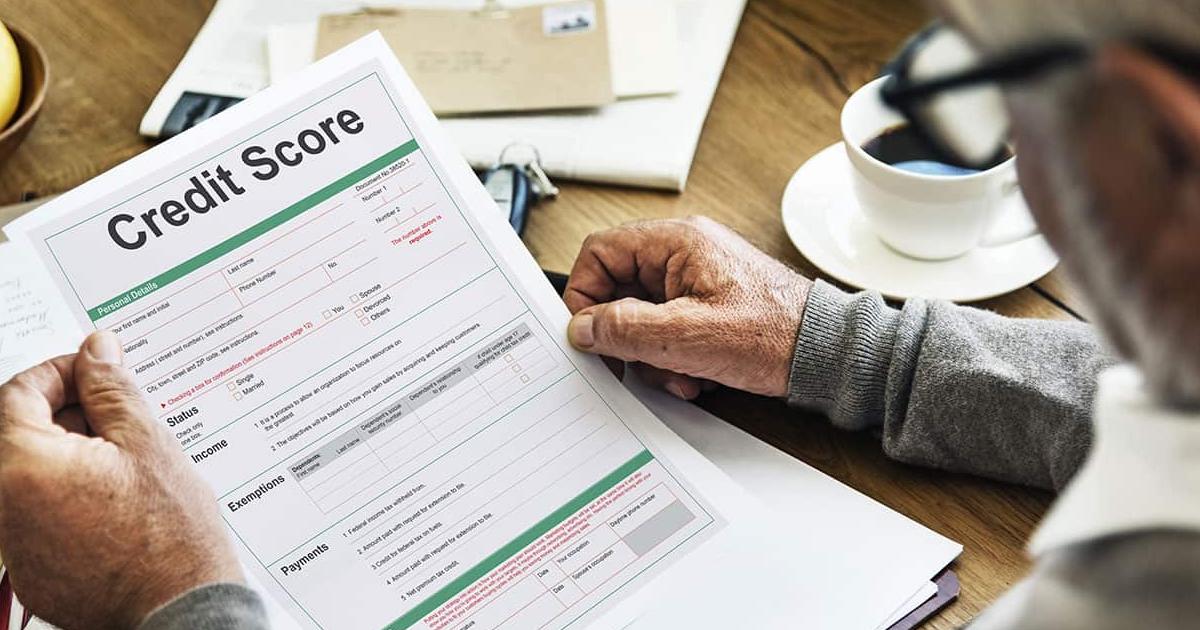Although credit cards aren’t the only type of debt that most consumers hold, they are often the biggest challenge to manage. Since these accounts are a type of revolving credit, the required payment changes depending on the account balance. The more you charge, the more your creditor will expect you to pay each month.
Another big part of the challenge that credit cards bring is high interest rates. Many accounts have rates of 20% or higher. This means roughly one-half to two-thirds of every minimum payment you make goes to covered accrued monthly interest charges. As a result, you can make payments month after month, but your balances never really seem to go down.
Jump to one of these sections:
- Budgeting to reduce your balances
- Solutions to consolidate debt
- Free consumer credit counselling
- Bankruptcy vs consumer proposal
Minimum payment requirements will rarely lead to credit happiness
Each monthly credit card statement will list a minimum required payment that you must make to avoid late fees. However, consumers often assume that the payment requirement is a recommendation – that making that payment every month means you’re managing your account effectively.
However, minimum payment schedules are not designed to get out of debt. In fact, sticking to these payments will keep you in debt as long as possible to maximize the credit card company’s profits.
This means that if you want to get credit happy, you really need to develop better strategies for paying off your balances.
The best way to manage your accounts
In an ideal world, you should pay off any charges you make throughout the month in full each billing cycle. This is the best way to use credit cards to gain all the benefits without increasing the cost of purchases with interest charges. It will also help boost your credit score and avoid financial hardship.
If you start and end each billing cycle with a zero balance on a credit card, interest charges never apply. Even if you have a rewards credit card with 20% APR, that rate would never apply if you manage the account correctly.
<iframe src="https://www.debt.ca/embed/calculators?type=repay&title=Debt+Repayment+Calculator" width="100%" height="1040" frameborder="0" scrolling="yes" style="padding:0px;"></iframe>2 strategies for paying off balances that you carry over
If you start to carry balances over from one month to the next, then you need to stop charging and focus on paying off the debt. This is especially true if you’re carrying balances on multiple credit cards at once. When this happens, you should implement a debt reduction plan to knock out the debt quickly.
Strategy 1: Paying off debt by the highest APR first
The most cost-effective strategy for paying off credit card debt is to prioritize your balances by APR. You focus on paying off the balance that has the highest APR first. This will help you save money as you get out of debt. This is known as the debt avalanche method.
Here’s how it works:
- Review your budget to temporarily cut as many unnecessary expenses as you can. This will free up as much cash as possible to pay off your balances quickly.
- Write down each balance you owe and note the APR.
- Prioritize the balances from highest to lowest APR.
- Make the minimum required payment on each account except the one with the highest APR.
- For that debt, make the largest payment possible to pay it off in big installments.
- Once that balance is paid off, move on to the account with the next highest APR.
- Repeat until all your balances are paid off.
Strategy 2: Start with the lowest balance first
If your highest APR debts also have your biggest balances, it may be tough to gain momentum to pay them off. In this case, you implement the same strategy, but you prioritize the balances by putting them in order of lowest to highest balance.
You still review your budget to free up as much cash flow as possible and make the minimum requirements on your other bills. However, you focus the larger payment on the account with the lowest balance first.
The idea is that you knock out the lowest balances faster, which will give you extra cash flow and momentum to tackle your larger debts. You essentially get a few “quick wins” to motivate you to pay off all your balances in full.
Using other solutions to keep credit card debt manageable
The credit card debt reduction strategies above work best when balances are still relatively low – a few thousand dollars or less. If your balances get above $2,000 to 3,000, then it may be time to look for solutions that will help you pay off that debt faster.
Solution 1: Using credit card balance transfers
Balance transfer credit cards allow consumers to transfer existing balances on high-APR accounts to a new account with much lower APR. If you have a good or excellent credit score, you can even qualify for 0% APR for 6-18 months after you first open the account.
This allows you to pay off your existing balances interest-free for a period of time. Thus, it’s much easier to reduce the debt because you can focus on paying off the principal (the actual debt you owe) rather than wasting money on accrued monthly interest charges.
Each transfer will have a fee that usually comes out to 1-3% of each balance transferred.[1] Once you transfer the balances, make sure to avoid making new charges on the rest of your existing accounts. This will allow you to focus all your effort on paying off the transferred balance as quickly as possible.
Credit score required to use this solution: Good to excellent (700+)
Cost: 1-3% of each balance transferred
Benefits: Allows you to pay off debt interest-free
Drawbacks: Only works for limited debt amounts; doesn’t work if you have fair or bad credit
Monthly payments: Should be as high as possible to eliminate the balance before the 0% APR period ends
Works best for: Less than $5,000-$10,000 in total credit card debt, depending on the 0% APR period you can qualify for
Time to payoff: 6-18 months, if you pay the debt in full within the 0% APR period
How it works
- Shop online or contact financial
institutions to compare balance transfer credit card offers. You want to look
for:
- The longest 0% APR period possible
- Low balance transfer fees
- Low APR after the 0% introductory rate period ends
- Apply for the best card you can
find, given your credit score.
- Make sure to check the terms of the card once the credit card company approves your application
- Begin transferring the balances you wish to move, either online or by calling the balance card’s customer service line.
- Fees will apply to each balance you move.
- Divide the total balance by the number of months in the introductory rate.
- Review your budget to free up enough cash to afford those monthly payments.
- Avoid making new charges on any cards until the transferred balance is paid in full.
Solution 2: Consolidate your debt with a personal loan
Debt consolidation loans are unsecured personal loans that you can use to pay off existing debts. Loans tend to have much lower APR than credit cards, particularly if you have a good or excellent credit score. You enjoy a low fixed interest rate, as well as fixed monthly payments that are often lower than your total credit card payments.
The cost of consolidating debt this way is usually a loan origination fee, which generally ranges from 0.5% to 8% of the loan amount.[2] Assuming you can qualify for a low interest rate based on your credit score, this can be a low-cost solution to paying off credit card debt. This solution is the most beneficial if you can qualify for a loan APR of 10% or less.
Another benefit of these loans is that you can use them to consolidate more than just credit card debt. You can consolidate other personal loans, child support arrears, back taxes owed to the CRA,
Credit score required to use this solution: Good to excellent (700+)
Cost: 0.5-8% of total loan amount
Benefits: Fixed monthly payments and lower APR
Drawbacks: Less effective for high debt amounts, if you owe $50,000 or more; only beneficial if the APR on the loan is significantly lower than your credit card APR.
Monthly payments: May be lower than the total monthly payments for your credit cards
Works best for: Up to $25,000-$30,000 in total debt
Time to pay off: 3-5 years, depending on the term of the loan
How it works
- Shop online or call several lenders
to compare loan options. You want to look for:
- Low APR
- Low origination fees
- Options that can reduce APR, such as setting up AutoPay
- A term that will offer monthly payments you can afford
- Apply only for the best loan you find. In other words, don’t apply for multiple loans to get specific terms, because multiple credit inquiries can decrease your credit score.
- Once approved, the lender will either disburse the funds into your bank account or they may disburse the funds directly to each of your creditors to pay off your existing debts.
- This will zero out your account
balances on your credit cards and any other loans you include, leaving only the
consolidation loan to repay.
- Make sure to avoid making new charges on your credit cards until you have the consolidation loan paid off.
Using consumer credit counselling when you need help
As long as you maintain a good credit score and control your balances, you should be able to manage debt on your own without professional support. However, even with the best-laid plans, situations can arise that can drive up your balances, such as divorce, unemployment, or an extended illness or medical condition.
If you see that you’re overextended and won’t be able to easily pay down the debt on your own, then you may need professional help. Your first step should be to contact a non-profit consumer credit counselling agency.
What is consumer credit counselling?
Credit counselling services provide professional assistance to consumers who are facing challenges with credit card debt. There are non-profit and for-profit versions of these services, but in most cases, you want to stick with the non-profits.
When you contact a non-profit credit counselling agency, they will review your debts, credit and budget with you in a free evaluation. The goal is to see where you stand and confirm that you are past the point of being able to solve your challenges with debt on your own.
If so, the credit counsellor will see if you qualify for a debt management program. This is a professionally-assisted repayment plan that you arrange through a credit counselling agency. They work with your creditors to eliminate or reduce the interest rates applied to your debt. If you qualify, you make one payment to the credit counselling agency, which they distribute to your creditors on your behalf.
It’s important to note that if you use this option, you will likely see your credit score decrease. It will be noted in your credit report that you are paying your debts back on an adjusted payment schedule. This notation remains on your profile for two years from the date you complete the program.
With that in mind, you should make every attempt to solve your challenges with debt on your own to avoid credit damage. However, if you see that you can’t become debt-free without professional help, don’t wait to reach out and get the help you need.
Credit score required to use this solution: No requirement – you can qualify even if you have bad credit
Cost: Setup and monthly administration fee included with monthly payments you arrange with the counsellor
Benefits: One monthly payment that, on average, reduces your total credit card payments by up to 30-50%; also eliminates or reduces the APR applied to your debt
Drawbacks: Freezes all credit card accounts you include in the debt management plan; you can’t apply for new cards while you are enrolled. Also, will cause some credit damage.
Monthly payments: May be lower than the total monthly payments for your credit cards
Works best for: $10,000 or more in credit card debt (there is no cap to the maximum amount you can include)
Time to payoff: 36-60 payments (3-5 years)
How it works
- Contact a non-profit credit counselling agency for a free debt and budget evaluation.
- Review your debts, credit, and budget with a trained credit counsellor, usually over the phone; this consultation typically takes 30 minutes to an hour.
- If a debt management plan is your best option to get out of debt, you and the counsellor will work together to find a monthly payment you can afford.
- Then the credit counselling team will contact your creditors to eliminate or lower the interest rates applied to your balances; they will also stop future penalties and late fees.
- Once all your creditors agree to accept adjusted payments through the credit counselling agency, your debt management plan will start.
- You make one payment to the agency and they distribute the payment to your creditors as agreed.
- During the program, you will not be able to use your existing cards or apply for new cards.
- It will be noted in your credit report that you are repaying your debts through a debt management plan; this notation will remain for two years after you graduate.
The right time to seek a discharge
Credit counselling is designed to help you pay back everything you owe in a more efficient way. This helps minimize the credit score damage of getting professional help to pay off your debt.
However, in some cases, you may be so overextended that you can’t reasonably expect to pay back everything you owe. In this case, you may need to work with a Licensed Insolvency Trustee (LIT) to discharge some of your balances.
When you contact an Insolvency Trustee, they will conduct a full review of your finances, including your total assets and liabilities. Then they will determine the best solution for your needs, which may be a consumer proposal or bankruptcy.
- If you have the means to pay off at least some of your balances by making monthly payments, then the trustee will arrange a consumer proposal.
- If you are unable to pay, the Trustee will declare you insolvent and you will be eligible for bankruptcy.
What is a consumer proposal?
A consumer proposal is a formal agreement between you and your creditors for the partial repayment of your debts. The Licensed Insolvency Trustee will determine how much you can reasonably be expected to pay. Then they will set up a repayment plan that can last up to five years. You will pay back a percentage of what you owe each creditor. Once you complete the payment plan, the creditors will discharge the remaining balances on your accounts.
Credit score required to use this solution: No requirement
Cost: $1,500 filing fee plus 20% of all payments paid through the trustee
Benefits: Protects your assets from being liquidated to pay off your debt; freezes all interest charges and typically lowers your monthly payments
Drawbacks: Negatively affects your credit for six years from the date of discharge; payment amount will be set by the trustee and you will be expected to make the payments
Monthly payments: Typically, lower than your total monthly payments
Debt amount: $1,000-$250,0000 for individual filing or $500,000 for a joint filing
Time to payoff: Payment plan must be completed in 60 payments or less
What to expect if you file for bankruptcy
During bankruptcy, the Trustee will oversee the liquidation of any assets you have, with some exclusions. Then they use the money from the sales of your assets to pay back your creditors and lenders. Once all eligible assets are sold and the money gets paid to your creditors, the remaining balances will be discharged.
Each account that is discharged will be listed under “discharge” status on your credit report for six years. To qualify for bankruptcy, you must:
- Owe $1,000 or more in unsecured debt
- Be declared insolvent by a Licensed Insolvency Trustee.
If you have surplus income and assets once your creditors are paid, you will not pay any upfront costs to file. If you don’t have any surplus, the Trustee will set up a fee arrangement.




